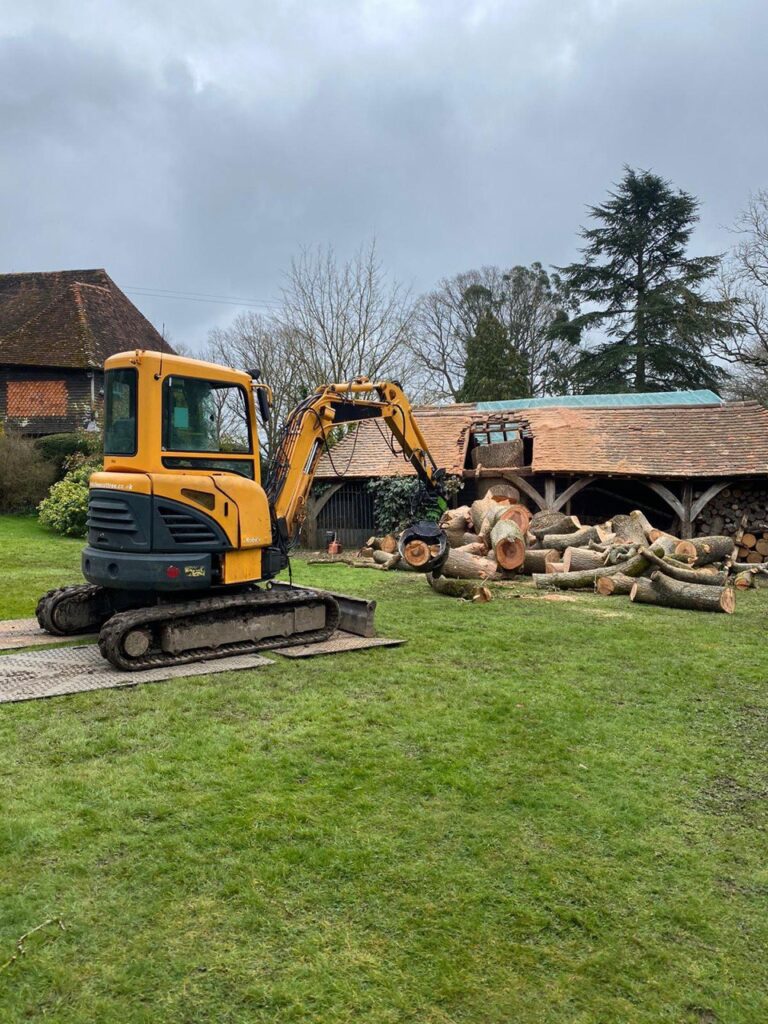How Regular Tree Trimming Can Prevent Roof and Foundation Damage
Trees are an essential part of any landscape, providing shade, improving air quality, and enhancing property aesthetics. However, when trees are not properly maintained, they can become a significant risk to both roofs and foundations. Regular tree trimming helps prevent structural damage, ensuring your home remains safe from potential hazards.
For homeowners in Great Yarmouth, Norfolk, where tree growth can be unpredictable, professional tree maintenance is crucial in avoiding costly repairs and protecting your property’s integrity.
How Overgrown Trees Can Damage Roofs
Untrimmed branches hanging over a roof can pose serious risks, especially during storms or high winds. Large branches can snap and fall, causing extensive damage to roof tiles, gutters, and even structural elements of the building.
Leaves and small debris accumulating on the roof can clog gutters and downpipes, preventing proper drainage. Water pooling on the roof due to blocked gutters can lead to leaks, dampness, and eventual structural issues within the property.
Moss and algae growth on a roof can accelerate due to overhanging trees providing shade and trapping moisture. This can weaken roofing materials over time, reducing their lifespan and increasing the likelihood of costly repairs.
Animals such as squirrels and birds can use overgrown branches as access points to your roof, leading to potential nesting inside roof spaces. This can result in insulation damage, chewed wiring, and hygiene concerns.
How Tree Roots Can Affect a Property’s Foundation
Large trees with invasive root systems can cause significant damage to a property’s foundation. If a tree is planted too close to a building, its roots can extend underneath the structure, displacing soil and creating instability.
As tree roots grow, they absorb moisture from the surrounding soil, leading to soil shrinkage and foundation settlement. This is particularly problematic for properties built on clay-based soils, where ground movement can cause cracks in walls and floors.
Blocked underground pipes and drainage systems can occur when tree roots infiltrate them in search of water. This can lead to plumbing issues, including slow drainage, leaks, and potential structural weakening of underground foundations.
Roots lifting paved areas and driveways can create uneven surfaces, posing trip hazards and reducing the overall stability of outdoor spaces. This can result in costly resurfacing work to rectify the damage.
The Importance of Regular Tree Trimming
Keeping trees well-maintained through professional trimming helps prevent many of these issues before they develop into serious structural problems.
Reducing overhanging branches minimises the risk of storm damage to roofs. By keeping branches trimmed back, property owners reduce the likelihood of falling debris and roof damage during extreme weather conditions.
Improving sunlight exposure and air circulation prevents excessive moss and algae growth on roofs. Allowing more natural light and airflow to reach the roof helps keep it dry, reducing the chances of moisture damage.
Encouraging healthy root development ensures trees grow in a controlled manner without affecting a building’s foundation. Regular pruning can help redirect root growth away from structures and underground utilities.
Reducing weight and wind resistance improves tree stability. Trees with excess foliage and extended branches are more likely to be uprooted or break during high winds. Routine trimming keeps trees strong and well-balanced.
How Often Should Trees Be Trimmed?
The frequency of tree trimming depends on the species, size, and location of the tree. However, as a general rule, trees should be inspected and trimmed at least once every one to three years.
Fast-growing trees may require annual maintenance to prevent overgrowth and root expansion. Slower-growing species can often be trimmed every two to three years, depending on their condition.
Trees near buildings should be monitored more frequently to ensure they do not pose a risk to roofs, windows, or foundations. Preventative maintenance is always more cost-effective than emergency repairs.
Professional Tree Trimming Services in Great Yarmouth, Norfolk
While minor pruning can sometimes be done by homeowners, large-scale trimming should always be carried out by professional tree surgeons. Using the correct tools and techniques ensures the health of the tree while minimising risks to the surrounding property.
Professional tree surgeons assess each tree individually, identifying potential risks and determining the best course of action to maintain both the tree’s health and the safety of nearby structures.
Trimming services include removing dead or weak branches, reshaping tree crowns to improve stability, and managing root systems to prevent foundation damage.
By investing in professional tree maintenance, homeowners can avoid costly structural repairs while maintaining a healthy and attractive outdoor space.
Conclusion
Regular tree trimming is a vital part of property maintenance, helping to prevent roof damage, foundation issues, and long-term structural problems. Overgrown branches can pose risks to roofs, while unchecked root growth can compromise the stability of a building’s foundation.
For expert tree maintenance services in Great Yarmouth, Norfolk, professional tree surgeons can provide tailored solutions to keep trees healthy and property structures safe. If you need a professional assessment or tree trimming services, contact Great Yarmouth Tree Surgeons today.
Call us on: 01493 807 192
Click here to find out more about Great Yarmouth Tree Surgeons
Click here to complete our contact form and see how we can help with your tree’s needs.

